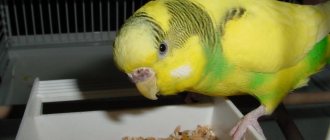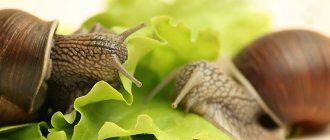Do you know which fruits you can always give your dog, which ones with caution, and which ones you should not offer your pet at all? Today we will try to understand this issue with you.
Currently, there are many different power systems. For example, adherents of the RAW system argue that, following the physiological characteristics of its distant ancestors - wolves, a dog should eat exclusively animal protein. That in the wild, wolves eat exclusively meat.
But it is not so. Yes, the main product in a predator’s diet is undoubtedly meat and poultry. But an important part of the diet consists of plant foods. By eating various berries, wild fruits and mushrooms, the body receives the fiber it needs. Steppe wolves often raid watermelon and melon fields. But by eating various rodents along with the contents of their stomachs, predators also eat grain crops.
Therefore, whatever one may say, dogs need both plant foods and grain products. And it’s not surprising that your pet eats a slice of apple, a carrot or a piece of watermelon with great pleasure. The four-legged body simply needs this.
But today we will talk about which fruits are necessary and healthy for dogs, and which ones should be limited. To ensure that no digestive disorders or allergies arise when introducing any new fruit into your dog’s diet, it is important to know how to properly offer your dog a new treat.
How to introduce fruits into your dog's diet
How should you offer fruit to your dog for the first time? There are several basic recommendations:
- Each new fruit should be given to the dog in small quantities, no earlier than 1-2 hours after the main feeding.
- Be sure to monitor the condition of your furry friend. If symptoms such as red ears or limbs, rashes or redness on the skin, watery eyes, gas, bloating, diarrhea or nausea appear, your pet is likely allergic or intolerant to the fruit.
- Add fruits one at a time. It should take at least 2-3 days before giving your dog a new piece of fruit. If an allergy appears, this is the only way you will understand exactly which fruit.
- It is best to choose seasonal fruits. The fruits must be fresh.
- The dog must be accustomed to any plant food from puppyhood. This is the only way you will get a fluffy who is not picky about food.
Rules for feeding plant foods
We described above what vegetables and fruits a dog can eat. Now let's look at the rules for eating plant fruits:
- New foods unknown to your pet should be introduced gradually and little by little. It is enough to give one teaspoon of a new treat once a day.
- If any allergic symptoms occur, you should immediately discard the product. And for a couple of days, give only proven food.
- Vegetables should be heat treated before consumption.
- Vegetables can be fed to pets in stewed, boiled, steamed, raw form, depending on the product, see above.
- Cook and simmer foods for 20 minutes without salt.
- You can prepare a salad of several vegetables using flaxseed oil.
- You cannot force it; some dogs are not attracted to vegetables and fruits at all.
Which fruits are safe for dogs?
Important! A dog’s food intolerance to a particular product is an individual characteristic of a particular organism. There are general lists of products recommended for consumption. But this does not mean that your four-legged dog will 100% not have an allergy or intolerance to one or another “allowed” product. Everything is individual. Only you yourself, through trial, can adjust the diet of your furry friend and determine the products that are right for him.
Apple
Apple is one of the fruits that practically does not cause allergies in our four-legged friends. This fruit is beneficial for both people and animals. Apples are rich in vitamin C, iron, calcium and magnesium. Apple is useful for preventing heart disease and normalizing intestinal function.
How often should you give them, at what age and in what quantities should you include this fruit in your tailed friend’s diet, read about Apples for dogs.
Pear
Pears, like apples, rarely cause allergies. If you begin to accustom your puppy to this fruit from childhood, the pear will become an excellent treat that no tailed gourmet will refuse.
Watermelon
Another fairly safe fruit for dogs, or rather a berry, is watermelon. This is a seasonal fruit that both people and our tailed tomboys look forward to. You can offer your dog watermelon in exactly the same form as we eat it: without the rind and without the seeds. Watermelon perfectly quenches thirst and helps remove cholesterol from the body.
The only side effect that may appear after eating watermelon is an unscheduled request from the watchdog to go pee. So, if you offer your dog watermelon, it is advisable to do it on a day off when you are at home.
Melon
Just like watermelon, melon is an excellent thirst quencher. The ancestors of dogs, wolves, often raided watermelon and melon fields for precisely this purpose. But excessive consumption of this fruit can cause digestive upset.
Banana
Many ponytails simply adore bananas. This exotic fruit is rich in beneficial vitamins and minerals. This fruit is often used as pet food. Banana is practically safe for dogs.
But fruits that are not quite ripe should be offered. Overripe fruit can cause a laxative effect. Offering your furry friend a banana 1-2 times a week will only benefit his body.
Rowan, rosehip
The fruits of rowan and rose hips are a storehouse of useful substances. They contain many amino acids - the building material of all body systems. They are rich in waste-removing pectin and dietary fiber, carotene and vitamins B and E. But the tiny red berries have a specific taste. Therefore, you need to accustom your dog to these berries from an early age.
Blueberry
Blueberries are a natural antioxidant. It is rich in vitamins A, B and C, as well as magnesium and calcium. This is a very healthy berry. But due to the fact that it has a pronounced aftertaste, dogs rarely prefer to eat it fresh.
Gooseberry
Gooseberries are useful for both people and animals. It practically does not cause allergies in dogs. But you should only eat berries grown without chemicals. Gooseberry fruits are recommended for metabolic disorders.
Currant
Currants are a very tasty and healthy berry that many dogs love and can happily eat straight from the bush.
Healthy berries
Berries are another acceptable and healthy treat. However, among them there are also varieties that pose a danger.
Sweet cherry pits contain cyanide and can become stuck in the throat if swallowed.
What berries can be included in your diet in moderation:
- One of the first summer berries is strawberries. Serves as a source of fiber and vitamin C.
- Blueberries are useful for antioxidants, vitamins A, E, K. This berry is often included in high-end industrial specialized feeds.
- Raspberries have anti-inflammatory properties. May be useful for older animals. It is also rich in vitamin C.
- Rowan has no contraindications and is a good source of microelements. Contains essential organic acids and pectin. There is more provitamin A in its ripe berries than in some vegetables, for example, carrots. It is advisable to get used to this berry from a young age.
Which fruits should you limit?
Here is a list of fruits and berries that can be offered to a dog, but in very limited quantities. If after eating these fruits the animal does not have a disorder, then it is quite possible to include them in the menu. But, only in small quantities.
Persimmon
In limited quantities, persimmons are very beneficial for digestion. This fruit is a natural antioxidant. Persimmon is high in iodine and has a calming effect. Our Jack loves to eat this sweet fruit. Persimmons should be given to your dog without peel or seeds.
Plum
Many dogs enjoy eating plums. If you offer your pet this berry, be sure to remove the seeds. Well, the most important thing is that the plum should not be overripe. Overripe fruits contain alkoids that cause fermentation. This is fraught with gastrointestinal upset and poisoning.
Strawberries and wild strawberries
Strawberries and strawberries are rich in vitamins A, B and E. In addition, strawberries are high in vitamin C. The berries contain a large amount of manganese, which nourishes the intervertebral discs and, in combination with calcium and phosphorus, helps strengthen bones.
However, you should not offer your pet strawberries and wild strawberries in large quantities. The high content of red pigments (anthocyanins) in berries can cause an allergic reaction.
Raspberries
Like strawberries, raspberries are rich in vitamin C and have strong anti-inflammatory effects. But, like strawberries, raspberries are an allergen. Therefore, the consumption of this tasty and juicy berry should be limited.
Peach and Apricot
This is a great treat for your pet. Remove the pit, cut into slices, and your little one will definitely be satisfied. In large quantities, peaches and apricots can make you weak, especially for dogs that are not used to such treats.
Papaya
Papaya is a very healthy exotic fruit. Papaya contains a lot of enzyme that helps break down tough meat fibers. And this improves digestion and normalizes intestinal function.
Papaya fruits contain an alkaloid (carpaine), which has an anthelmintic effect, but at the same time can be dangerous in large quantities.
In addition, papaya is a fairly sweet fruit. Therefore, it is prohibited to offer it to dogs.
Kiwi
Kiwi is rich in vitamin C. But it is not recommended to give it often. For medium-sized dogs, no more than one slice per week is allowed.
Cherries and sweet cherries
Cherry fruits cannot be called a champion in the content of one or another useful element. All vitamins and minerals are distributed more or less evenly in the berry. Offering a few berries to your pet as a treat will do no harm.
Before giving your dog cherries, be sure to remove the pits. Cherry pits release hydrocyanic acid, which has a toxic effect on the body.
Cherries are not recommended for dogs prone to allergies, as well as animals with gastrointestinal diseases.
Blueberry
Dogs love blueberries, which are already the perfect size as a treat for mouths large and small. If you're dealing with a tiny dog or a large blueberry, cut the blueberry in half before serving.
Benefits:
- Low sugar levels make blueberries a good treat for dogs with diabetes.
- Contains vitamins C and K, as well as calcium, magnesium, zinc, iron and antioxidants.
Fruits that are not recommended for dogs
I will list fruits that are not recommended for dogs. But, if your dog accidentally eats a small tidbit of one of these treats, most likely nothing terrible will happen.
Grape
Many owners of four-legged animals claim that their pets eat grapes without any consequences or complications. Yes, that's probably true. But grapes (especially the Isabella variety) contain a substance called methanol, which is a strong poison.
In animals with a sensitive gastrointestinal tract and kidney problems, even a few grapes eaten can cause severe poisoning and kidney failure.
Pomegranate
Fruits are very healthy for dogs. But fruits with seeds, and especially seeds from them, are under no circumstances allowed. And pomegranate just belongs to this number. In addition to intestinal obstruction, eating the seeds can cause poisoning. After all, the seeds contain cyanide, the use of which even in small quantities causes poisoning in the animal.
Avocado
Avocado contains a toxic substance called persin, which can cause the development of pancreatitis and disruption of the heart and respiratory tract. Therefore, just as in the case of grapes, it is better not to offer this fruit to a four-legged animal at all.
Citrus
As we know, citrus fruits (lemons, tangerines, oranges and grapefruits) contain a high content of vitamin C, which can cause irritation of the gastric mucosa. However, if your dog is in excellent health and is not prone to allergies, it is quite acceptable to offer your tail a few slices of these fruits (no more), especially in winter.
And in conclusion I would like to say. Offering your dog fruit is not only possible, but even necessary. However, this tasty treat can bring both benefit and harm to the animal’s body. Therefore, it is important to know which fruits can be given and which ones it is better not to experiment with.
Watermelon
There's nothing more satisfying on a hot day than a juicy slice of watermelon, and our dogs agree. Just don't feed them the skins or seeds, which are difficult for your dog to digest.
Benefits:
- High in lycopene, an antioxidant that protects against cell damage.
- Contains vitamins A, B-6 and C, as well as thiamine, which helps convert fats, proteins and carbohydrates into energy.
- Incredibly moisturizing thanks to its high water content.
Is it possible to have canned apricots?
In general, preservatives and, accordingly, canned foods are extremely undesirable for animals. They, of course, will not be lethal in small quantities, but they will not bring health or benefit either. You should not use canned foods to expand your pet’s diet - you can always find a natural alternative, for example, fresh apricots. Fortunately, in modern realities, buying them is absolutely not difficult, and they are not as expensive as it might seem at first glance (taking into account the volume of complementary foods).
How to give the product to an animal?
Symptoms of poisoning
If you suspect that your dog has eaten at least one grape or several berries, then carefully monitor his well-being. The first symptoms of poisoning appear as:
After some time, vomiting, nausea, frequent urge to go to the toilet, and diarrhea occur. The animal develops intense thirst and frequent urination, turning into a complete absence of urine.
If you do not contact a veterinary clinic in a timely manner, the symptoms of poisoning intensify:
The first symptoms of poisoning may appear within 4-6 hours or after 3-4 days.
Important! Veterinarians have not yet established the exact cause of this phenomenon, what toxin in the berries causes such a reaction in the animal. Assumptions - intoxication is provoked by the remains of fungal toxins and pesticides contained in grapes.
Cocktail “Winter-Summer”
Ingredients:
- Strawberries - 300 g + 4 pcs. For decoration
- Lemon - 2 pcs.
- Pomegranate - 1/2 pcs.
- Water (highly chilled) - 700 ml
- Sugar syrup - 100 ml
- Mint - 1 sprig
- Honey - 1/2 tsp.
- Crushed ice - a handful
How to prepare: Cut the strawberries into 4 parts. Place in a blender and add 100 ml of water. Grind until puree. Squeeze the juice from one lemon. In a jug, mix water (600 ml), sugar syrup, lemon juice. Add strawberry mixture. Peel the pomegranate, separate it into grains and place them in a jug.
Wash the lemon, cut into slices and dip into the drink. Cut the strawberries left for decoration in half and drop into the cocktail. Top with crushed ice without stirring. Grease the neck of the jug with honey and stick mint leaves to it.
They don't need innovation
Can a dog taste spicy food? Dogs have about 1,700 taste buds (humans have 9,000), and they are not as sensitive to taste as humans, according to the American Kennel Club. Simply put, dogs still won’t appreciate spicy food. They won’t feel the difference, but they will experience gastrointestinal upset. If you want to diversify your pet's diet, this can be done without human products. For example, you might offer your dog his favorite food in a new flavor, but in reality, he'll be fine with eating the same food every day. And don't forget that dogs have a keen sense of smell. If you've ever smelled cumin powder, you know what a strong smell means. Now imagine that the dog will smell this smell even more acutely. Some spices that even make you watery can have a much stronger effect on your pet.
Pet owners perceive them as full members of the family. But feeding is not the case. Don't risk your dog's health by offering him your food, especially spices. The dog should only eat special food.
Cherry delight
Ingredients:
- Lime juice - 1/2 tbsp.
- Lime zest - 1/2 tsp.
- Lemon juice - 1/5 tbsp.
- Lemon zest - 1/2 tsp.
- Cherry - 1 tbsp.
- Water - 1/5 tbsp.
- Sugar - 150 g
- Mint - 2 sprigs
- Sparkling water - 3 tbsp.
How to prepare: Grate the zest of lime and lemon on a fine grater, squeeze the juice from the fruit. Combine juice and zest in a saucepan. Remove the pits from the cherries and mash the berries. In a separate saucepan, combine sugar and cherries. Add water and add chopped mint. Heat the berries over low heat until the sugar dissolves. Strain the cherry syrup through a sieve, pouring it into the mixture of juice and zest. Mix thoroughly. This will be the base for the cocktail. Dilute it with sparkling water in a ratio of 1:3. Pour half a glass of ice, pour in 50 ml of syrup and add 150 ml of sparkling water.
Large
First of all, don’t forget to give your large dog fruit from time to time, based on his “fierce appearance.” She is, of course, a predator, but she also needs vitamins. It is optimal that fruits occupy 15% of the diet - that is, one fruit can be given every day (if the animal is more than 10 kilograms, otherwise half is enough).
Large dogs are allowed to be given a banana once a week, a whole apple – 2-3 times a week. You don't have to cut the apples: they will train your jaws and help clean your teeth of plaque.
Cocktail “Refreshing Bomb”
Ingredients:
- Sorrel - 1 bunch
- Red currant – 150 g
- Tonic
- Crushed ice - 1 tbsp.
How to cook: Wash the sorrel, sort it and remove the hard stems. Place sorrel, 50 g currants and ½ cup crushed ice into a blender. Grind until puree. Transfer the resulting puree into a jug, add the remaining ice and berries, pour in pre-chilled tonic, stir and let the solids settle.
- Marinated champignons: 5 favorite recipes, “just like mom makes”
- Zelensky's mushroom soup - what the president ate
- How to cook cauliflower so that your family stays at the table until the end
Subscribe to the daily email newsletter from the creators of the number 1 newspaper in Ukraine
Every evening in your inbox the most important, exclusive and useful. Subscribe
Plum
Plum fruits contain organic acids - malic and citric, from sugar compounds - glucose and sucrose, carotene, pectins, minerals - iron, copper, cobalt, manganese, potassium, calcium, iodine.
But there is little vitamin C in plums.
This vitamin ranks second in our need for it after vitamin C.
Plums also contain a large amount of vitamin P (this is the general name for a group of flavonoids - biologically active substances that can bind with other biologically active substances in the body and enhance the effect of their action). Vitamin P, like vitamin C, has the ability to regulate the formation of collagen, the main component of the vascular wall. With a constant supply of vitamin P, the walls of the capillaries are strengthened, their elasticity and strength increases, the vessels dilate, this normalizes blood pressure, reduces swelling and serves as a preventative against varicose veins, hypertension and atherosclerosis.
Plums are very high in vitamin E, an antioxidant that binds free radicals.
Plums have a general strengthening effect and are useful for metabolic disorders, kidney disease and intestinal sluggishness. Plum juice has a pronounced antibacterial effect.
Small breeds
Small breeds require special treatment: various poisons and allergens affect them much more strongly. If a huge Alabai calmly swallows a couple of unhealthy pieces of fruit and ends up with an upset stomach, then the Chihuahua can be seriously poisoned, even fatally.
Therefore, you should choose 100% safe fruits for them, feed them in small pieces and avoid getting crusts and seeds. Let’s stipulate: a “small piece” for a dog weighing 1.5-2 kilograms is a piece the size of half a finger.
There is an opinion that only apples are allowed for small dogs. In any case, “controversial” fruits like bananas or plums should not be included in their diet.
Characteristics of nuts
It is generally accepted that nuts include walnuts, hazelnuts, pistachios, peanuts, almonds, cashews, chestnut, pine, and nutmeg fruits.
They are rich in fats, oils, proteins and amino acids. The large number of elements presented and the desire to see the pet healthy makes you think about the use of nuts in the diet of dogs.
To make the right decision, you need to remember: nuts are not a light food and have a large number of calories. When consumed by a dog, the following consequences are possible:
- Manifestation of allergies (if certain breeds are prone to allergic reactions);
- Negative effects on the pancreas, which produces digestive substances;
- Heavy load on the liver;
- Excess weight (in the absence of training).
Nuts. Use in dog diet
Among the entire group of fruits for treating dogs, pine nuts, walnuts, peanuts and almonds are distinguished. It is allowed to give your pet hazelnuts and hazelnuts.
Cedar fruits contain vitamins A, B, C, D, PP, E and are indicated for diseases of the cardiovascular system and gastrointestinal tract.
Peanuts contain vitamins C, D, A, PP, E, K, B, minerals - calcium, sodium, potassium, iron, zinc. Peanuts are choleretic for dogs and also lower cholesterol levels in the pet’s blood.
Almonds contain vitamins B and E, zinc, iron, phosphorus, calcium, magnesium. It has a positive effect on the condition of the coat, skin, and teeth.
Hazelnuts help remove toxins from the body (especially from the liver).
Walnuts are rich in vitamins B, A, C, E, PP, iodine, potassium, magnesium, and phosphorus.
Along with nuts that are suitable for treats, there are types that are dangerous to your pet’s health - these are nutmeg and the Australian nut - macadamia. These fruits, in their pure form or used in products, contain a toxin that can negatively affect the nervous and digestive systems of animals and cause muscle cramps and seizures.
It must be remembered that nuts are foods that are unusual for the pet’s body and are very difficult for them to digest. When consuming this product, you need to monitor the reaction of the digestive system.
Of the entire group of nut fruits listed, the most suitable for use in dog nutrition is peanuts, which belong to the legume family and are therefore characterized by lower fat content.
Walnuts can be given one or two per week. This type of fruit is a leader in poisoning dogs: the kernel mold contains toxins, and fragments of the eaten shell cause intestinal obstruction
Therefore, it is extremely important to clean them thoroughly before giving them to your dog.
Almonds are also susceptible to the formation of mold, which is not visible in small quantities, but will have a negative effect on the pet’s nervous system
It should be given with caution to dogs with weak stomachs and intestines. Regular consumption of almonds negatively affects the activity of the pancreas and can lead to its inflammation.
Pine nuts are allowed as a treat in a small handful, but in no case should the treat be consumed every day.
Hazelnuts are rich in minerals and vegetable protein. The nut should be given to the dog shelled. But it should not be given to dogs prone to allergies and those with diseases of the digestive system.
Conclusion
Animals of different breeds, having different immunity, structural features of the gastrointestinal tract, predisposition to allergies, can digest nut fruits differently.
Considering that their consumption in large quantities is contraindicated, and vitamins are important for your pet’s health, it is better to check with your veterinary clinic about separately purchasing vitamins or balanced premium food containing the necessary vitamins and minerals in sufficient quantities.
No matter how the animal owner tries to diversify the menu with the inclusion of foods that are unusual for pets, it is important to remember that for dogs, the more monotonous the diet, the better for health and digestion. Authors of the articles: Belanta Clinic team
Authors of the articles: Belanta Clinic team
Eats from the garden
Dog owners often talk about how their animal feasts on strawberries straight from the garden. But this should not be allowed: firstly, it is impossible to control how much the dog has eaten, and secondly, unwashed strawberries will cause an upset stomach (especially in small dogs). Poisoning by herbicides, which are sometimes used to treat berries against weeds and pests, is also possible.
Leaves
Strawberry leaves, which are good for humans, cannot be eaten by dogs. They contain tannins that cause fever in animals. And this is another reason why your pet should not be allowed near the beds.
Why is she doing this?
If a dog raids garden beds, it may lack vitamins. It is worth reviewing the animal’s diet by adding fruits and vegetables. If everything is in order with the food, and the raids do not stop, the pet just wants to feast on it. And it’s worth weaning yourself off of this.
How to wean it off?
To begin with, when you arrive at the site, walk around it with your dog and command “ugh!” when approaching forbidden places. True, this will not help completely.
The optimal solution is to fence the beds with netting. But it is worth considering that a number of dogs, such as huskies, jump well and a fence will not be an obstacle for them.
It is also important at the planting design stage to avoid a situation in which the animal finds itself in a dead end, from which there are only two ways out: the first uninteresting one is to turn around and look for a workaround, and the second is the path to the beds through the fence. Another, more expensive option is to purchase a special repeller with a motion sensor.
It is connected to a hose, and the dog gets a shower as soon as it approaches.
Another, more expensive option is to purchase a special repeller with a motion sensor. It is connected to a hose, and the dog gets a shower as soon as it approaches.
Important: the easiest way to scare a dog away from the garden beds is to generously sprinkle ground pepper around. This inhumane method is actively used by summer residents, which is worth considering when letting your pet out for a walk in the private sector.
What to do in case of poisoning
An animal’s life depends on providing timely assistance. The first thing the owner needs to do if he notices that the dog has eaten grapes is to try to induce vomiting.
You can do this in several ways:
After the dog vomits, give it plenty of water and as many activated charcoal tablets as possible. The recommended dosage for a pet in case of poisoning is 4 tablets (can be crushed into powder) per 1 kg of weight.
After all procedures, immediately contact a veterinary clinic. It is necessary for specialists to conduct a series of examinations (blood and urine tests) and check the functioning of the kidneys using an ultrasound examination.
Treatment
For treatment, the doctor prescribes drugs that stimulate the kidneys and liver, which are responsible for removing toxins from the body. Blood purification drips and a strict diet for one month may also be prescribed.
When is there a ban on apricots?
Like absolutely any product, this fruit has contraindications for use. First of all, it is necessary to note possible allergic reactions. Unfortunately, they are not uncommon even in people; they are also possible in dogs. As already noted, this is due to the exoticism of the fruit. For this reason, it is recommended to be as careful as possible when initially trying to feed your dog a treat. After the first feeding, observe for a couple of days, and only then repeat.
There is one more aspect that must be kept in mind. Apricots are known to have a very high acid content. Conclusion: For dogs with gastrointestinal problems, it is best to completely abstain from consuming the product in any form or quantity.
Questions and answers
Our readers often ask questions that they want answered. Therefore, we present the most common of them.
Can dogs eat seedless grapes?
Regardless of the presence or absence of a seed in a grape, it should not be given to a dog. In addition, it is prohibited to feed your pet any baked goods containing raisins.
Can dogs eat green grapes?
Only an owner who does not love his devoted friend will feed his pet green unripe grapes. Not only is the fruit unripe and sour, but your pet can get poisoned from a small amount.
Can dogs eat grape leaves?
If your pet eats grape leaves, it means he has problems with the gastrointestinal tract. There is no point in stopping him from doing this. Dogs can eat leaves. The rough, hard leaves cleanse the stomach, causing the animal to vomit.
How to avoid poisoning?
The dog loves sweets, which is why it is attracted to delicious juicy grapes. Her desire can be satisfied with other, safer fruits. For example, a piece of pear with less sucrose, green apples, kiwi, banana, watermelon or cantaloupe. You can also give your dog raspberries, strawberries, gooseberries or currants.
My dog eats grapes without harming his health!
Such statements are quite common on animal lovers forums. However, you should not listen to their opinion. Each animal, like a person, is individual and has its own immunity. What may be a minimal amount for other dogs may be the maximum toxic dosage for your dog.
In conclusion, I would like to repeat: giving grapes to dogs is strictly prohibited. What is healthy and tasty for humans can cause serious harm to an animal’s body. A small amount of berries provoke disruption of the gastrointestinal tract and cause kidney failure. Take care of your pets.
Source











